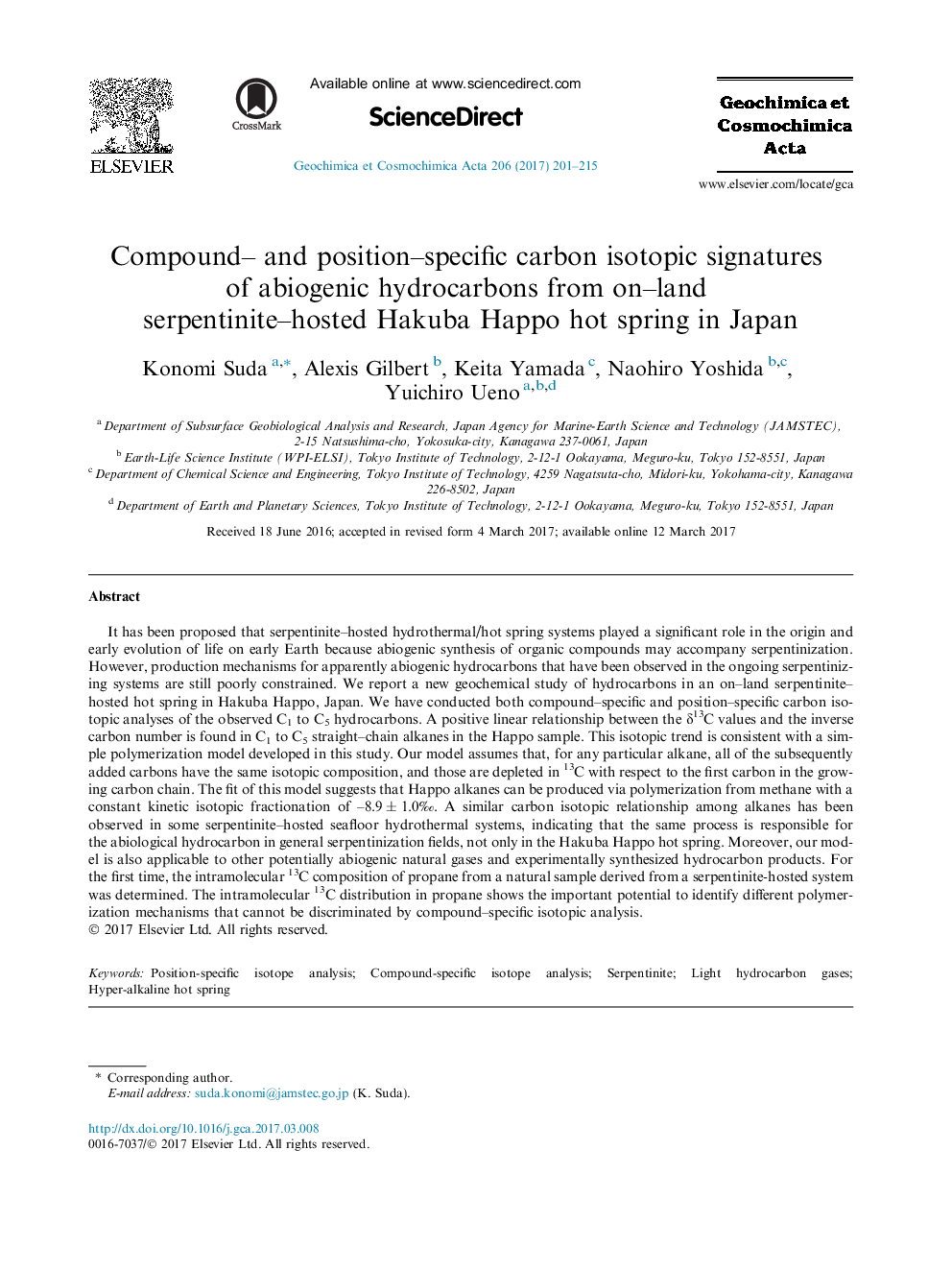| Article ID | Journal | Published Year | Pages | File Type |
|---|---|---|---|---|
| 5783420 | Geochimica et Cosmochimica Acta | 2017 | 15 Pages |
It has been proposed that serpentinite-hosted hydrothermal/hot spring systems played a significant role in the origin and early evolution of life on early Earth because abiogenic synthesis of organic compounds may accompany serpentinization. However, production mechanisms for apparently abiogenic hydrocarbons that have been observed in the ongoing serpentinizing systems are still poorly constrained. We report a new geochemical study of hydrocarbons in an on-land serpentinite-hosted hot spring in Hakuba Happo, Japan. We have conducted both compound-specific and position-specific carbon isotopic analyses of the observed C1 to C5 hydrocarbons. A positive linear relationship between the δ13C values and the inverse carbon number is found in C1 to C5 straight-chain alkanes in the Happo sample. This isotopic trend is consistent with a simple polymerization model developed in this study. Our model assumes that, for any particular alkane, all of the subsequently added carbons have the same isotopic composition, and those are depleted in 13C with respect to the first carbon in the growing carbon chain. The fit of this model suggests that Happo alkanes can be produced via polymerization from methane with a constant kinetic isotopic fractionation of -8.9 ± 1.0â°. A similar carbon isotopic relationship among alkanes has been observed in some serpentinite-hosted seafloor hydrothermal systems, indicating that the same process is responsible for the abiological hydrocarbon in general serpentinization fields, not only in the Hakuba Happo hot spring. Moreover, our model is also applicable to other potentially abiogenic natural gases and experimentally synthesized hydrocarbon products. For the first time, the intramolecular 13C composition of propane from a natural sample derived from a serpentinite-hosted system was determined. The intramolecular 13C distribution in propane shows the important potential to identify different polymerization mechanisms that cannot be discriminated by compound-specific isotopic analysis.
